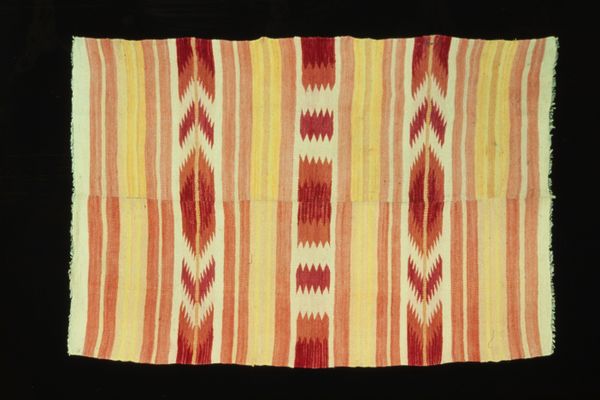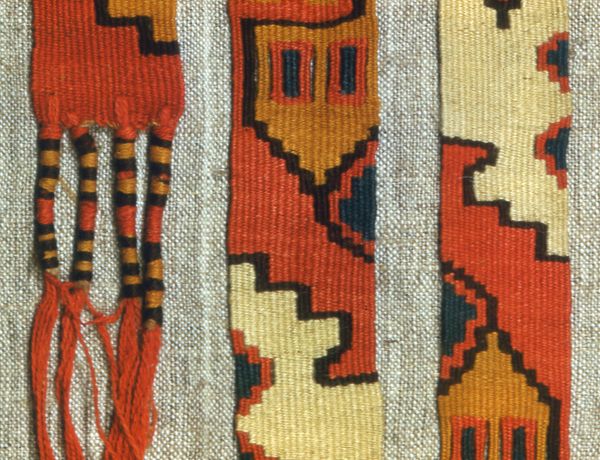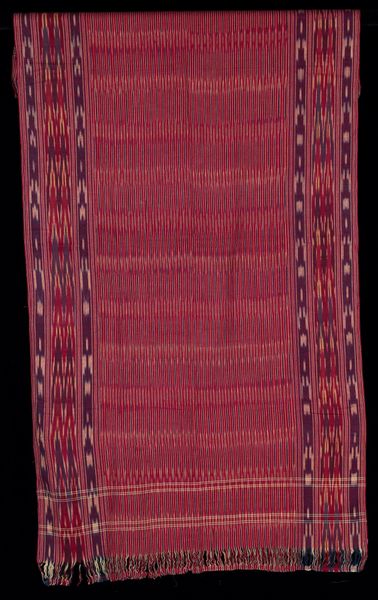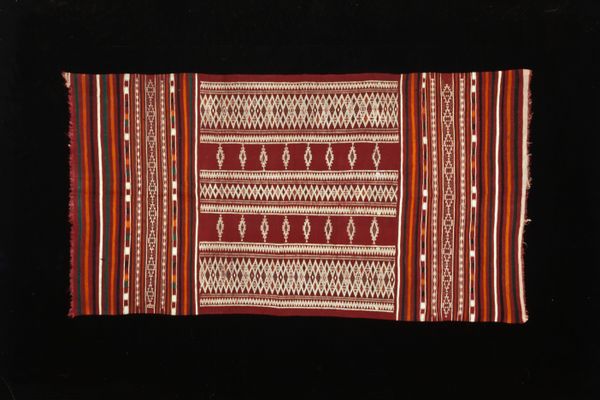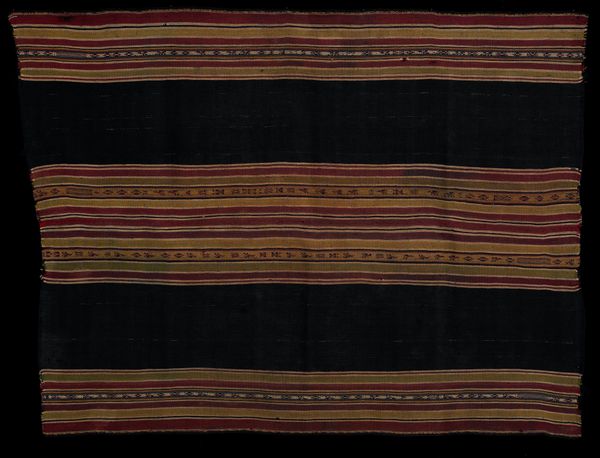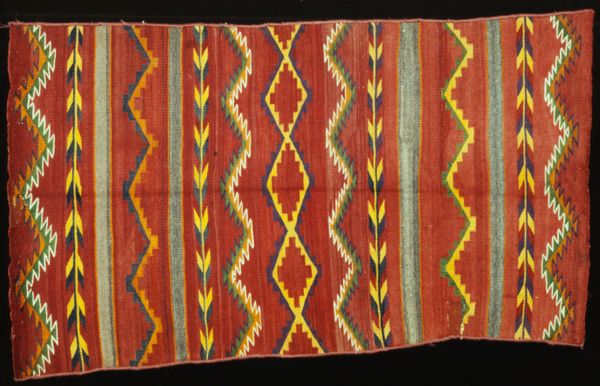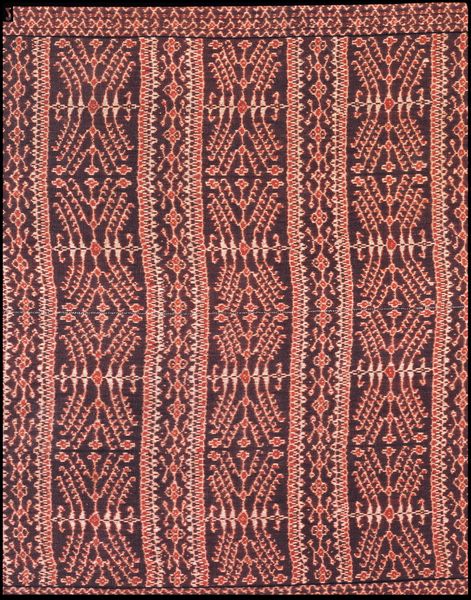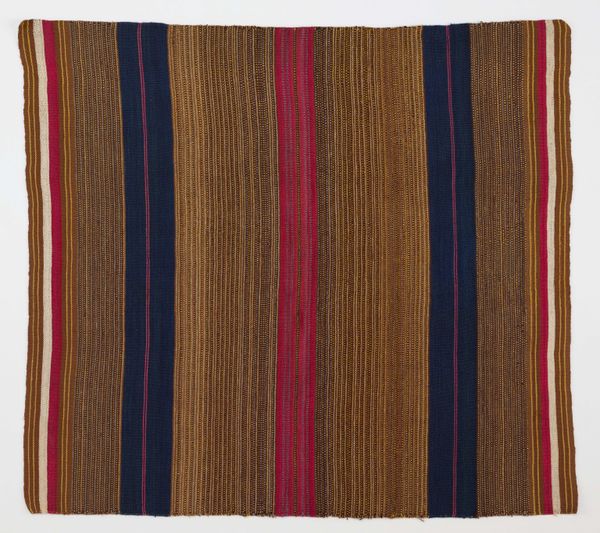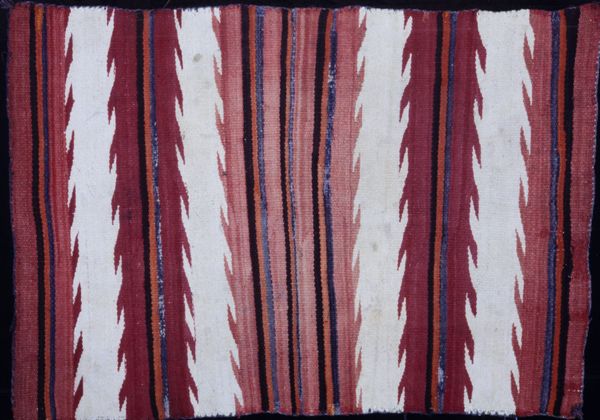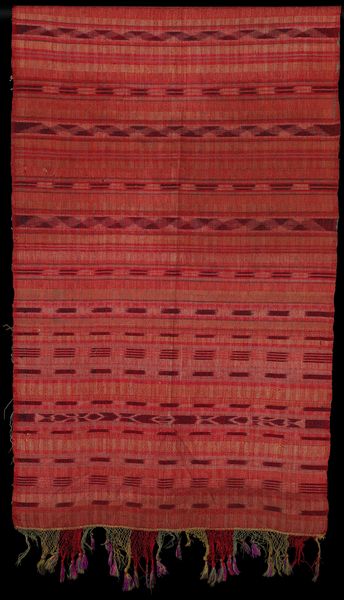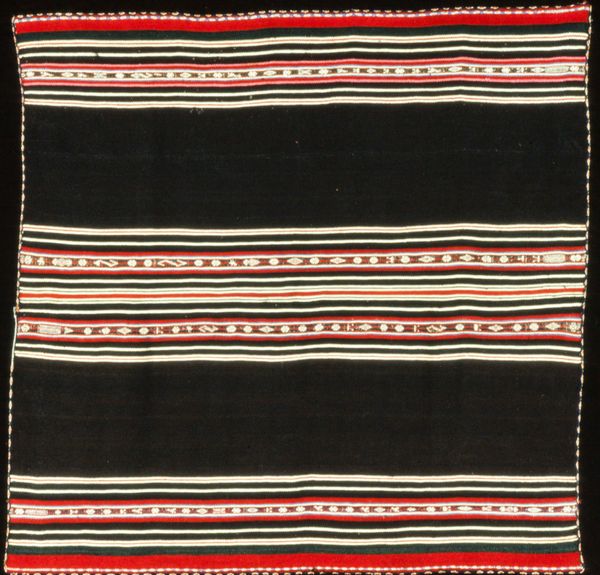
panel, silk, weaving, textile
#
panel
#
silk
#
pattern
#
pattern
#
asian-art
#
weaving
#
textile
#
geometric pattern
#
abstract pattern
#
organic pattern
#
geometric
#
repetition of pattern
#
vertical pattern
Dimensions: 80 x 58 in. (203.2 x 147.3 cm)
Copyright: Public Domain
Curator: Let's discuss this woven silk panel, believed to be from the 19th century and residing here at the Minneapolis Institute of Art. Editor: My initial impression is of subdued elegance, and almost like looking through fogged glass. The color palette, though muted, conveys a certain warmth, and the textile looks incredibly soft. Curator: The silk speaks to a complex web of production and exchange. Think about the cultivation of the silkworms, the labor-intensive process of spinning the silk, the dyeing – often with natural pigments – and the weaving itself. These processes all require skilled hands and time. Editor: Absolutely. It makes me consider who the weaver was, and the societal context of her work. Was this piece commissioned? Who would have worn it or used it? What socio-economic factors were in play determining its purpose and eventual destination to a Western museum? Curator: These are crucial questions. The textile itself becomes a document of the skills possessed within a particular community at a certain historical moment. It is so much more than just "decoration." The techniques embodied here – the warp and weft, the dye processes, the pattern’s structure – represent significant knowledge. Editor: Exactly. The design is mesmerizing in its combination of regularity and imprecision. The blurred lines give the pattern almost dreamlike feel. Were there any other symbolisms relating to that aesthetic being intentional or related to status for a person? Curator: Well, the complexity could absolutely denote status, a demonstration of wealth through access to skilled artisans and rare materials. However, from a material perspective, understanding the physical degradation can give us unique insights. For instance, analyzing the dyes reveals the substances used and gives information about trade routes that made these materials available. Editor: And the social stratification inherent in those trade routes! The legacies of colonialism and exploitation are woven – literally and figuratively – into pieces like this. We need to be mindful of power dynamics, both in the textile's creation and its current location within a museum setting. Curator: It is this connection of tangible objects to complex production that is crucial for contextualizing and providing narratives within social environments for the benefit of visitors' experiences. Editor: These are conversations needed more broadly across the industry as well as amongst consumers, hopefully moving forward as these historic perspectives make real contributions. Curator: Agreed, this close inspection helps us weave our understanding of these beautiful pieces and learn from the cultural production they reflect.
Comments
No comments
Be the first to comment and join the conversation on the ultimate creative platform.
